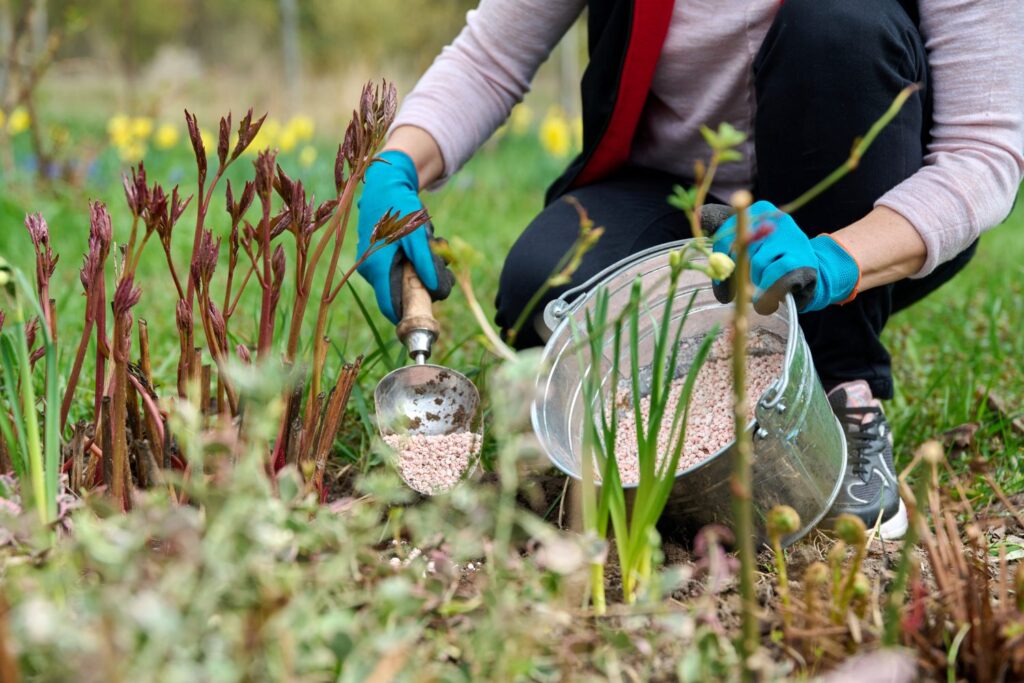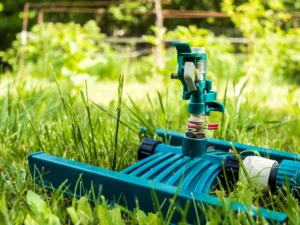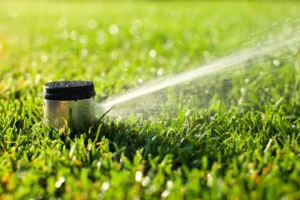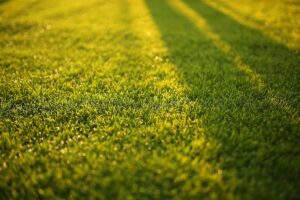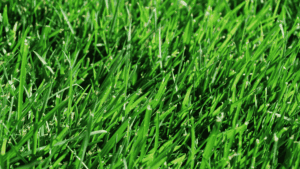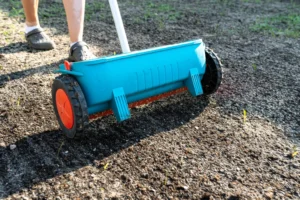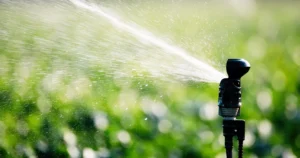Overseeding is a powerful technique for enhancing the resilience and appearance of our lawns, especially here in Georgia, where heat and humidity can take a toll on our turf. At Weed Pro, we understand the specific needs of our Georgia lawns and the importance of selecting the right grass type for overseeding. In this text, we share our insights on the best grasses for overseeding in Georgia, highlighting the top five grass types that thrive in the region to ensure your lawn stays lush and vibrant all year round.
Introduction to Georgia Lawns
Georgia lawns are as diverse as the state’s climate, which ranges from humid summers to mild winters. This variety means that choosing the right grass seed is essential for creating a healthy, green lawn that thrives year-round. Whether your Georgia lawn basks in full sun, enjoys partial shade, or endures high foot traffic from family and pets, selecting the best grass seed can make all the difference. Understanding the difference between cool season grasses and warm season grasses is key—cool season grasses flourish in the cooler months, while warm season grasses are at their best during Georgia’s hot summers. By choosing the right grass seed for your specific conditions, you’ll set your Georgia lawn up for success, ensuring it stays lush and resilient no matter what the weather brings.
Understanding Overseeding
Overseeding is the practice of planting grass seed directly into existing grass without tearing up the turf. This technique is vital for homeowners looking to thicken thinning lawns, introduce improved grass varieties, or provide winter color by seeding cool-season grasses over warm-season lawns that go dormant in cold weather. This method is beneficial as it can revitalize our lawns without the hassle of complete renovation.
Benefits of Overseeding in Georgia
Overseeding offers several benefits specific to the conditions in Georgia:
- Year-Round Greenery: Overseeding warm-season lawns with cool-season grasses maintains a vibrant green appearance even during winter when Bermuda and Zoysia typically go dormant.
- Lawn Density: By overseeding, we can fill in bare patches, reduce weed competition, and enhance overall lawn thickness, resulting in a healthier carpet of grass and promoting a healthy lawn.
- Soil Improvement: The roots of the grass help to improve soil structure, reduce erosion, and support essential microbial activity in the soil.
- Disease and Stress Resistance: A thicker lawn is generally more resistant to drought, pests, and diseases, which is particularly important in Georgia’s challenging climate. Overseeding helps establish a healthy lawn that can better withstand these stresses.
Top Five Grass Types For Overseeding
When selecting the right grass for overseeding, here are the top five types that we recommend for our Georgia lawns. Georgia grasses are diverse, and choosing the best grass seed options depends on your region’s soil types, soil pH, and ph and nutrient levels. Carefully matching your grass seed for Georgia to these factors will ensure optimal lawn health and performance.
| Grass Type | Best Use Case | Notes |
|---|---|---|
| Perennial Ryegrass | Winter overseeding of Bermuda/Zoysia | Commonly used for temporary winter lawns due to its fast germination and quick establishment. Annual ryegrass is an alternative for rapid winter color. Perennial ryegrass has low drought tolerance and tends to decline in late spring and early summer as temperatures rise. It is susceptible to gray leaf spot and has low foot traffic tolerance. As a cool season grass, it spreads by bunch-type growth (cool season grass spreads). |
| Tall Fescue | Year-round color, partial shade | A turf type tall fescue with deep roots, it does not produce significant thatch and prefers fertile clay soils with good drainage. Best suited for transition zone areas in Georgia, it thrives in fertile clay soils and is a good choice for grass seed for Georgia, often included in grass seed options. It has moderate maintenance needs and moderate foot traffic tolerance. |
| Bermuda Grass | Spring/summer overseeding, full sun | A warm season grass with high foot traffic tolerance, full sun drought tolerance, and sun drought tolerance. Bermuda grass requires frequent mowing and spreads vigorously via stolons and rhizomes (warm season grass spreads). Some hybrid varieties offer improved shade tolerance. |
| Zoysia Grass | Spring/summer overseeding | A warm season grass recognized for its thick, soft texture, good disease tolerance, and moderate maintenance needs. Zoysia has moderate foot traffic tolerance and spreads by stolons and rhizomes (warm season grass spreads). Some cultivars have improved shade tolerance, making it suitable for lawns with partial shade. |
| Kentucky Bluegrass | Not typically overseeded in Georgia | While not commonly used in Georgia, Kentucky bluegrass requires moderate mowing frequency and has low shade tolerance. As a cool season grass, it spreads via rhizomes (cool season grass spreads), but is less suitable for the warmer southern regions. |
Other warm season grasses suitable for Georgia include Centipede Grass (often called lazy man’s grass or low maintenance grass, preferring insects soil pH and moderately fertile soils) and St. Augustine Grass (which prefers moderately fertile soils and has moderate maintenance needs).
Choosing the Right Grass Type For Your Lawn
Before you rush out an buy any or all five grass types listed, it’s important that you consider context. The best grass type for your lawn needs to be suited for your region, your areas shade and drought tolerance, it’s soil and your personal preferences for lawn care.
Regional Considerations
Georgia’s unique geography means that not all grass seeds perform equally well across the state. In northern Georgia, including the scenic Blue Ridge Mountains, the cooler climate favors cool season grasses like tall fescue and Kentucky bluegrass. These grass types are well-suited to the region’s milder summers and can provide a green lawn even as temperatures dip. Moving into the Piedmont region, which includes the bustling Atlanta area, the climate becomes warmer, making warm season grasses such as Bermuda grass and Zoysia grass the right grass seed choices for a thriving Georgia lawn. Down in the Coastal Plain, where the weather is hot and humid, warm season grasses like Centipede and St. Augustine are the best grass options for lawns that need to withstand intense summer heat. By understanding your region’s climate and soil, you can select the right grass seed to keep your Georgia lawn looking its best.
Drought Tolerance and Shade
When choosing grass seed for your Georgia lawn, it’s important to consider how well different grass types handle drought and shade. Warm season grasses like Bermuda grass and Zoysia grass are known for their excellent drought tolerance, making them ideal for areas with limited rainfall or lawns that receive full sun throughout the day. These grass seeds can help your lawn stay green even during dry spells. On the other hand, cool season grasses such as tall fescue and Kentucky bluegrass are better suited for lawns with partial shade, as they thrive under trees or in areas that don’t get direct sunlight all day. By matching the right grass seed to your lawn’s specific conditions—whether you need drought tolerance, shade tolerance, or a balance of both—you’ll ensure your Georgia lawn remains healthy, vibrant, and resilient year-round.
Summary
In short, choosing the ideal grass type for overseeding involves considering several factors, such as:
- Region: North Georgia tends to favor cool-season grasses, while the central and southern areas typically use warm-season grasses and overseed with cool-season varieties for winter coverage.
- Sun/Shade Tolerance: Grass types vary in their sun and shade preferences. For instance, Bermuda thrives in full sun, while Zoysia and Tall Fescue cope well in partial shade.
- Maintenance Needs: Different grasses require varying levels of care. Centipede grass is known for its low maintenance, while Bermuda typically requires more attention.
- Traffic Tolerance: If your lawn sees a lot of foot traffic, Bermuda and Zoysia handle it well, while Centipede and Fescue prefer lighter usage.
- Soil Conditions: Consider the different soil types found in Georgia, such as clay, sandy, or loamy soils. Matching your grass selection to your specific soil type is crucial. For example, Centipede grows well in acidic, sandy soils, while others may tolerate a broader range of conditions. Testing your soil pH and ph and nutrient levels will help determine the best grass type and ensure optimal growth.
Taking these factors into account is essential for effective lawn care.
Conclusion
In Georgia, overseeding with Perennial Ryegrass is the most common approach for adding winter color over Bermuda or Zoysia. For year-round color in partial shade, Tall Fescue shines as an excellent option. Bermuda and Zoysia are primarily overseeded for repair rather than winter color. Kentucky Bluegrass isn’t widely suitable for our climate. Eventually, the grass type we choose should align with our specific climate, soil type, sun exposure, and maintenance preferences to ensure a thriving and beautiful lawn all year long.
Frequently Asked Questions
What are the best grass types for overseeding in Georgia?
The top five grass types for overseeding in Georgia are Perennial Ryegrass, Tall Fescue, Bermuda Grass, Zoysia Grass, and Kentucky Bluegrass, with Perennial Ryegrass being the most common for winter color.
How does overseeding benefit lawns in Georgia?
Overseeding enhances lawn density, maintains vibrant greenery year-round, improves soil structure, and increases resistance to drought, pests, and diseases, particularly in Georgia’s challenging climate.
What is the best time to overseed warm-season grasses in Georgia?
The best time to overseed warm-season grasses like Bermuda and Zoysia is during the fall, especially when introducing cool-season grasses like Perennial Ryegrass to maintain winter color.
Can I overseed with Tall Fescue in Georgia?
Yes, Tall Fescue is an excellent choice for overseeding in Georgia as it provides year-round color, tolerates partial shade, and has moderate drought resistance, making it versatile for various conditions.
What should I consider when choosing grass for overseeding in Georgia?
Consider factors such as regional climate, sun and shade tolerance, maintenance needs, traffic tolerance, and soil conditions to select the best grass type for overseeding in Georgia.

